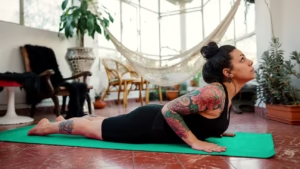In our fast-paced world, stress and anxiety have become almost universal experiences. Whether you’re dealing with work pressure, family obligations, or the constant noise of everyday life, finding ways to calm the mind is more important than ever. One of the most accessible and effective tools for relaxation and mental clarity is deep breathing.
Deep breathing is a simple yet powerful technique that taps into the body’s natural relaxation response. It can help reduce stress, improve focus, and promote a state of calmness. This comprehensive guide will explore the science behind deep breathing, the different techniques you can use, and how to incorporate them into your daily routine for long-term benefits.
Why Deep Breathing Works for Stress Relief
Before diving into the techniques, it’s helpful to understand why deep breathing is so effective for calming the mind. The process of deep breathing activates the body’s parasympathetic nervous system, which is responsible for the “rest and digest” functions of the body.
Here’s how it works:
- Activates the Relaxation Response: When you take slow, deep breaths, your body recognizes it as a signal that it’s time to relax. This triggers the parasympathetic nervous system, which slows your heart rate, lowers blood pressure, and reduces muscle tension.
- Regulates Oxygen and Carbon Dioxide: Deep breathing helps regulate the balance of oxygen and carbon dioxide in your body. By slowing down your breath, your body gets more oxygen, which helps improve mental clarity and focus.
- Reduces Cortisol Levels: Deep breathing has been shown to reduce the levels of cortisol, the primary stress hormone. Lower cortisol levels lead to less anxiety and stress, and promote feelings of calm and well-being.
- Increases Blood Flow to the Brain: Deep breathing improves blood flow and oxygen delivery to the brain, which enhances cognitive function, memory, and emotional regulation.
- Interrupts the Fight-or-Flight Response: The body’s natural stress response (fight-or-flight) is triggered by shallow, rapid breathing. Deep breathing helps counteract this by slowing the breath and sending signals to the brain that it’s time to relax, reducing feelings of panic or overwhelm.
The Best Deep Breathing Techniques to Calm Your Mind
There are several deep breathing techniques you can use to calm your mind and body. Here are some of the most popular and effective ones:
1. Diaphragmatic Breathing (Belly Breathing)
Diaphragmatic breathing is one of the most fundamental and powerful deep breathing techniques. It focuses on breathing deeply into your belly rather than your chest. This technique allows you to take in more oxygen and helps activate the parasympathetic nervous system, promoting relaxation.
How to Practice Diaphragmatic Breathing:
- Find a Comfortable Position: Sit in a chair with your back straight or lie down flat on your back. Place one hand on your belly and the other on your chest.
- Take a Deep Breath: Inhale slowly through your nose for a count of 4, ensuring that your belly rises as you breathe in, while your chest remains relatively still.
- Hold the Breath: Pause for a count of 4, holding your breath for a moment to allow the oxygen to fill your lungs.
- Exhale Slowly: Exhale slowly and completely through your mouth for a count of 6, feeling your belly gently fall as you release the air.
- Repeat: Continue this process for 5–10 minutes, focusing on the rise and fall of your belly with each breath.
Benefits:
- Reduces anxiety and stress
- Improves lung capacity
- Enhances relaxation
2. Box Breathing (Square Breathing)
Box breathing, also known as square breathing, is a simple and effective technique that focuses on equalizing the length of your inhale, hold, exhale, and pause. This technique is often used by athletes and military personnel to remain calm under pressure.
How to Practice Box Breathing:
- Sit Comfortably: Sit upright in a chair with your back straight and feet flat on the floor. Close your eyes to minimize distractions.
- Inhale for 4 Counts: Breathe in slowly through your nose for a count of 4.
- Hold for 4 Counts: Hold your breath for a count of 4.
- Exhale for 4 Counts: Slowly exhale through your mouth for a count of 4.
- Pause for 4 Counts: Hold your breath again for a count of 4 before beginning the next inhale.
- Repeat: Continue the process for 5–10 minutes or until you feel more relaxed.
Benefits:
- Calms the nervous system
- Improves concentration and focus
- Enhances emotional regulation
3. 4-7-8 Breathing Technique
The 4-7-8 breathing technique, developed by Dr. Andrew Weil, is a powerful method to promote relaxation and combat stress. This technique involves longer exhalations than inhalations, which helps reduce anxiety and triggers the body’s natural relaxation response.
How to Practice the 4-7-8 Breathing Technique:
- Sit or Lie Down: Find a comfortable position with your back straight and your hands resting on your lap.
- Inhale for 4 Counts: Close your mouth and inhale quietly through your nose for a count of 4.
- Hold for 7 Counts: Hold your breath for a count of 7.
- Exhale for 8 Counts: Exhale slowly and completely through your mouth for a count of 8, making a whooshing sound as you exhale.
- Repeat: Continue this cycle for 4 breath cycles initially, then gradually work up to 8 cycles.
Benefits:
- Helps fall asleep faster
- Reduces stress and anxiety
- Improves focus and mental clarity
4. Alternate Nostril Breathing (Nadi Shodhana)
Alternate nostril breathing, or Nadi Shodhana, is a technique from yoga that helps balance the body and mind. It’s often used to calm the nervous system, clear the mind, and enhance concentration.
How to Practice Alternate Nostril Breathing:
- Sit Comfortably: Sit in a cross-legged position or in a chair with your back straight. Place your left hand on your lap and bring your right hand up to your face.
- Close the Right Nostril: Using your right thumb, close your right nostril.
- Inhale Through Left Nostril: Inhale deeply and slowly through your left nostril.
- Close Left Nostril: Close your left nostril using your right ring finger, and release your right nostril.
- Exhale Through Right Nostril: Exhale slowly through your right nostril.
- Inhale Through Right Nostril: Inhale deeply through your right nostril.
- Close Right Nostril: Close your right nostril again with your right thumb, and release your left nostril.
- Exhale Through Left Nostril: Exhale slowly through your left nostril.
- Repeat: Continue this alternating pattern for 5–10 minutes.
Benefits:
- Balances energy and emotions
- Calms the nervous system
- Increases mental clarity and focus
5. Resonant or Coherent Breathing
Resonant breathing (also known as coherent breathing) involves breathing at a rate of 5 breaths per minute (one breath every 12 seconds). This technique is deeply relaxing and is known to balance the nervous system, reduce stress, and increase feelings of calm.
How to Practice Resonant Breathing:
- Sit or Lie Down: Find a comfortable position where you can relax.
- Inhale for 6 Seconds: Breathe in slowly and steadily through your nose for a count of 6.
- Exhale for 6 Seconds: Exhale slowly through your mouth for a count of 6.
- Repeat: Continue this slow, steady rhythm for 10–20 minutes.
Benefits:
- Lowers heart rate and blood pressure
- Reduces stress hormones like cortisol
- Enhances mental clarity and calmness
Incorporating Deep Breathing into Your Daily Routine
Deep breathing can be practiced anywhere, anytime, and for any length of time. Here are some tips for integrating deep breathing into your daily life:
- Morning Routine: Start your day with a few minutes of deep breathing to center yourself before facing the day.
- Breaks at Work: Take a 5-minute deep breathing break during your workday to reduce stress and improve focus.
- Before Sleep: Use deep breathing techniques like the 4-7-8 method to relax before bed and improve sleep quality.
- During Stressful Moments: When you’re feeling overwhelmed or anxious, take a few minutes to practice deep breathing. It can help ground you and restore a sense of calm.
Conclusion
Deep breathing is a simple yet effective tool for calming the mind, reducing stress, and improving overall well-being. Whether you’re dealing with anxiety, preparing for a big presentation, or simply seeking a moment of calm, deep breathing techniques can be your go-to solution. By incorporating these practices into your daily routine, you’ll not only cultivate a sense of peace and relaxation but also improve your physical health, mental clarity, and emotional balance.




